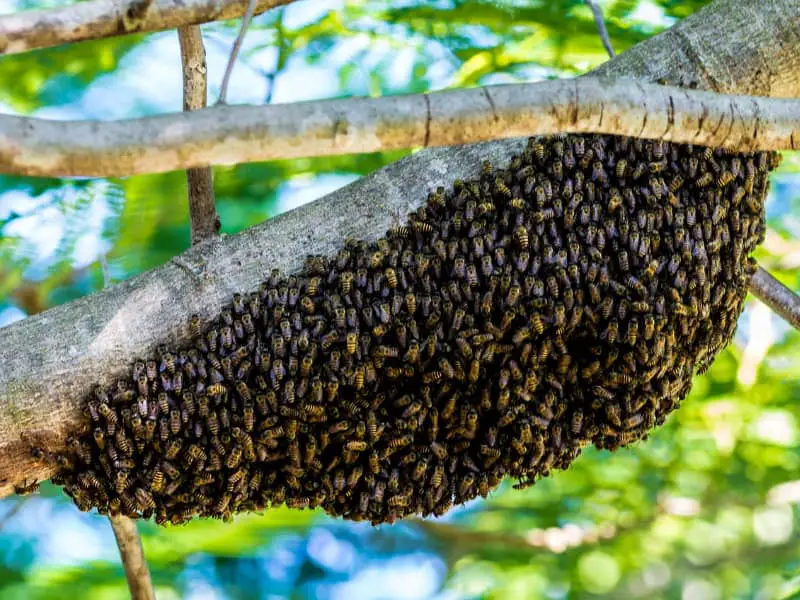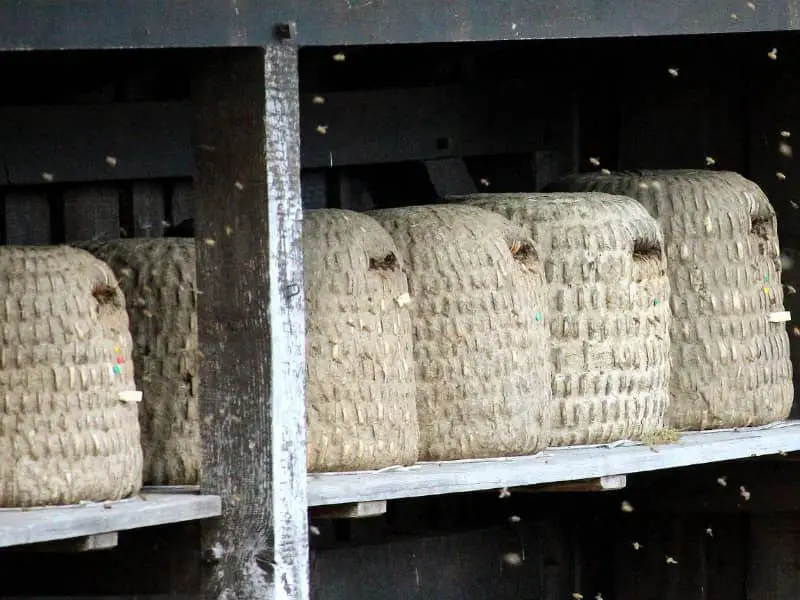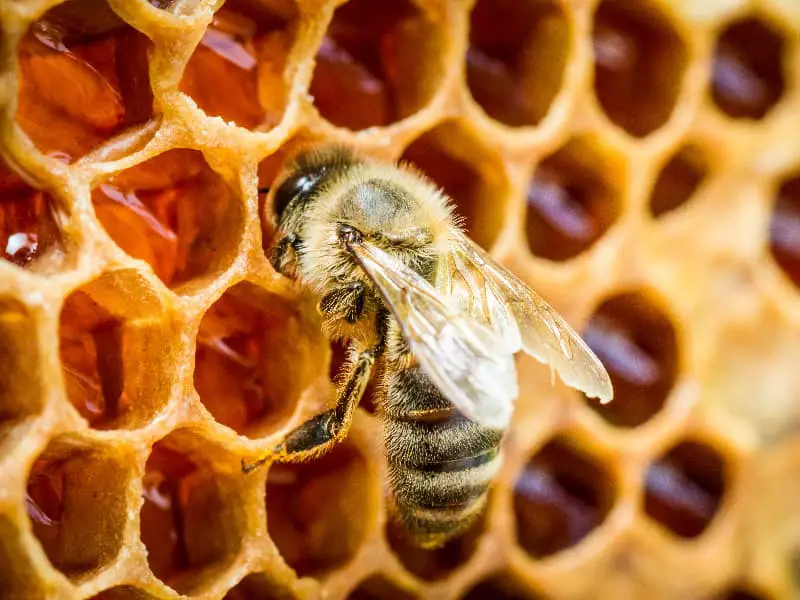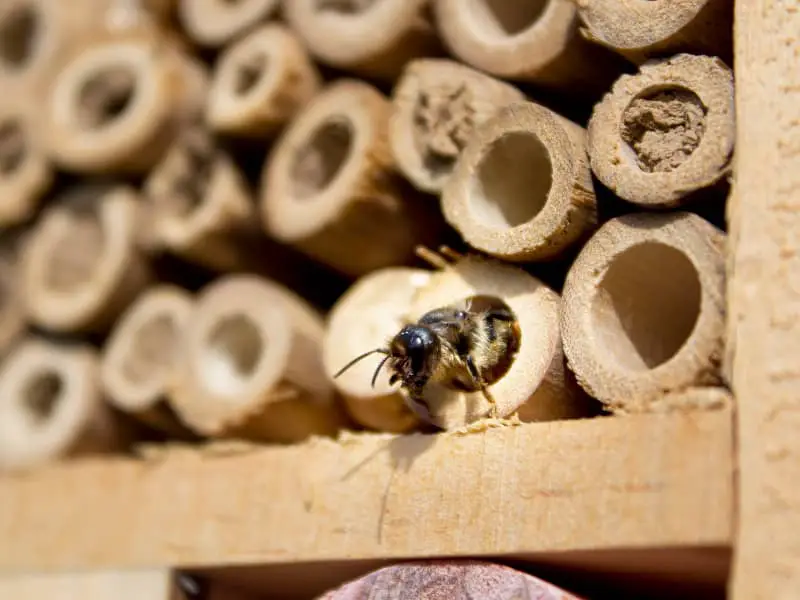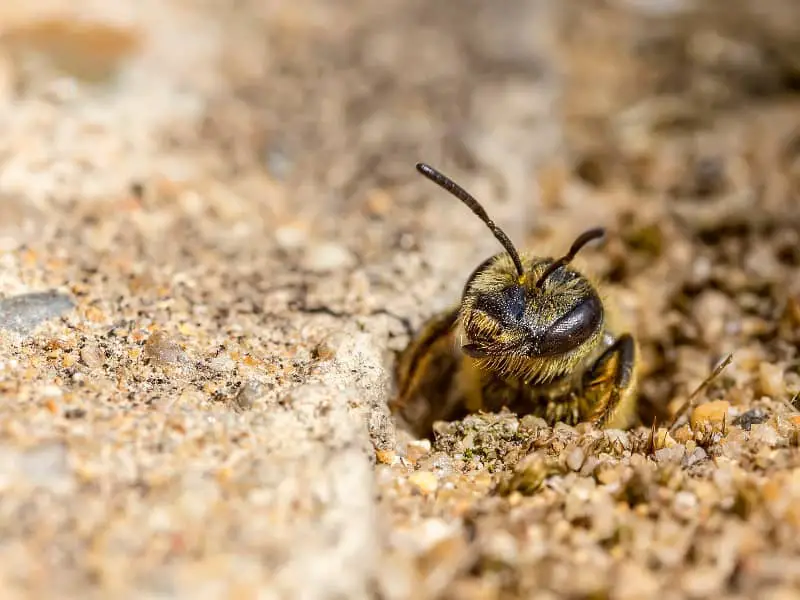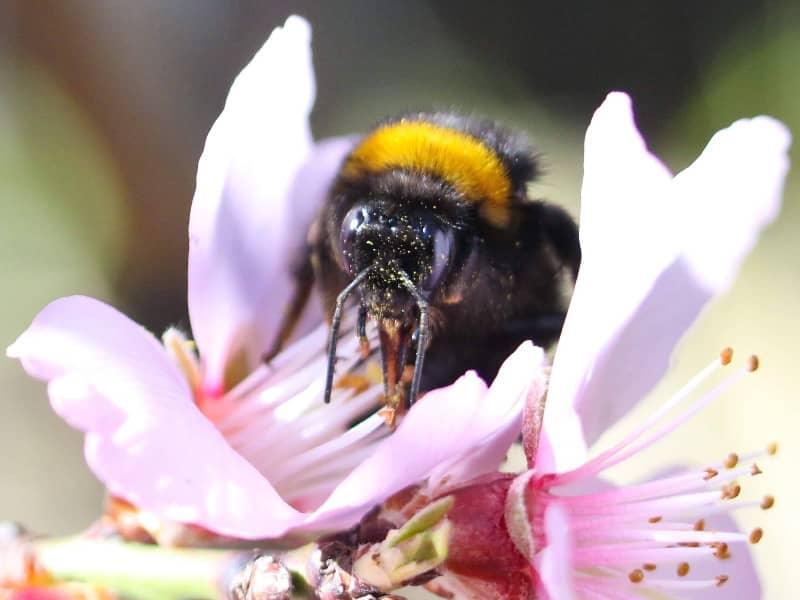
What makes bees aggressive?
Why are some bees aggressive and others not? This question is not only interesting for beekeepers and nature lovers, but also for everyone who is active in the garden or outdoors. In this blogpost we want to look at the different factors that can influence the aggressive behavior of bees.
- What makes bees aggressive?
- Importance of the question, "What makes bees aggressive?"
- Biology of the bee
- What makes bees aggressive? - Important factors
- Types of bees and aggressiveness
- What makes bees aggressive? - Diseases and parasites
- What makes bees aggressive? - The influence of humans
- What makes bees aggressive? - Seasons
- What makes bees aggressive? - Gender and aggressiveness
- What makes bees aggressive - defense mechanisms
- Conclusion: What makes bees aggressive?
Importance of the question, "What makes bees aggressive?"
The behavior of bees has far-reaching implications for our environment and agriculture. Bees are responsible for pollinating plants, a critical process that forms the basis for many foods. However, aggressive bees can pose a risk to both humans and other animals.
A better understanding of the factors that make bees aggressive could help minimize potential hazards while promoting the important role bees play in the ecosystem.
Goals of the blogpost
This blogpost aims to systematically review the various causes of aggressive behavior in bees. In doing so, we will consider the latest scientific findings and research. We will also discuss which preventive measures and management strategies can help avoid conflicts with aggressive bees.
What is bee aggressiveness?
Bee aggressiveness refers to behaviors designed to ward off or attack potential threats. This can range from simple warning signals such as an impending buzz to physical attacks such as stinging. It is important to emphasize that not all bees are aggressive; rather, there are a number of factors that can influence their behavior.
Biology of the bee
Before we turn our attention to the factors that can make bees aggressive, it is useful to understand the basic biological aspects of these fascinating insects. This understanding can help us better classify their behaviors.
Anatomy
The anatomy of a bee is specialized for its various tasks, from foraging to defense. Particularly relevant to the topic of aggressiveness is the bee's stinger. In many bee species, the stinger is a last resort for defense and is only used under extreme conditions. In some cases, the stinger remains stuck in the victim's skin after stinging, which can be fatal for the bee. This is a clear sign that aggressiveness is often associated with high risk for the bee.
Life cycle
The life cycle of a bee includes different stages from egg laying to adult insect. Aggressive behavior can occur at different stages of the life cycle, but is particularly evident in adult bees. Interestingly, bees exhibit different behaviors depending on their life stage. Young bees are often less aggressive than older bees that have already gained experience in protecting the hive.
Behaviors
Bees exhibit a range of behaviors from foraging to defending the hive. Many of these behaviors are coordinated through complex forms of communication and social structures in the hive. Aggressive behavior is only one aspect of a broad spectrum of behavior. It usually occurs in response to specific triggers, such as the approach of an enemy to the hive.
What makes bees aggressive? - Important factors
Now that we have a better understanding of the biology of bees, we can turn to the specific factors that influence their aggressive behavior. The reasons are many and range from environmental conditions to human activities.
Climate and weather
It may sound surprising, but climate and weather play a significant role in bee aggressiveness. On hot and humid days, bees are often more irritable and thus more likely to react aggressively. Abrupt changes in weather can also cause stress to bees, which can translate into increased aggressiveness.
Food shortage
Another crucial factor is the lack of food. When nectar and pollen are scarce, competitive pressure increases within the hive and between different hives. This can lead to increased aggression as bees try to protect their resources. The lack of food can also increase stress levels in the hive, which in turn influences the bees' aggressive behavior.
Attacks and disruptions
Bees are usually very sensitive to disturbances, whether from animals or humans. Entering the hive or even just being near it can be perceived as a threat that triggers an aggressive defensive reaction. Especially in the vicinity of the queen or brood, bees are particularly vigilant and ready to repel intruders.
Aggression factors are thus not only diverse, but also closely linked to the living conditions of bees. Understanding these factors can help avoid unnecessary conflicts with these important pollinators.
Types of bees and aggressiveness
It is important to realize that not all bee species are the same when it comes to aggressiveness. Different species have different behaviors, and understanding these differences can help avoid unnecessary conflict.
Honey bees
Honey bees are probably the best known bees and are often associated with beekeeping. As a rule, they are not particularly aggressive unless they feel threatened or their hive is disturbed. Honey bees usually only sting when they have no other choice, because a sting is a death sentence for them - their stinger gets stuck in the victim, tearing out parts of the digestive system.
Wild bees
Wild bees are a very diverse group, and their levels of aggression can vary greatly. Some species are very docile and do not tend to attack humans or animals. Others can be more aggressive, especially when it comes to protecting their nesting site. Wild bees often live alone or in smaller colonies and therefore have different defense strategies compared to honey bees.
Hornets
Although they are often referred to as bees, hornets are actually a subfamily of wasps. However, they are relevant to this discussion because they are often confused with bees and also have a stinger. Hornets can be quite aggressive, especially if their nest is threatened. Their stings are more painful than those of honeybees, but they can use their stinger several times, as it does not get stuck in the victim's skin.
What makes bees aggressive? - Diseases and parasites
The well-being of a bee can be significantly affected by diseases and parasites, which not infrequently result in increased aggressiveness. These aspects are particularly important for beekeepers and people who are in the vicinity of bees, as they can directly contribute to the health and behavior of the bees.
Varroa mite
The varroa mite is a widespread parasite that affects honey bees and can cause significant health problems in the hive. The stress caused by these mites can affect the bees' behavior and make them more aggressive. The treatment of a hive infested with varroa mites is complex and requires specific procedures to protect the health of the bees and reduce their aggressiveness.
Nosemosis
Nosemosis is a disease caused by microsporidia that affects the digestive tract of bees. The disease can negatively affect the bees' ability to gather and digest food, leading to increased stress and thus aggressive behavior. Controlling nosemosis is particularly important because a diseased hive poses a risk to the entire bee population in the surrounding area.
Foulbrood
Foulbrood is a bacterial disease that affects the brood of honey bees. The disease can spread quickly and endanger the entire hive. Affected hives may have an increased potential for aggression due to the added stress of the disease. In the case of an infestation with foulbrood, rapid and radical measures are required, often including the destruction of the entire hive, to prevent its spread.
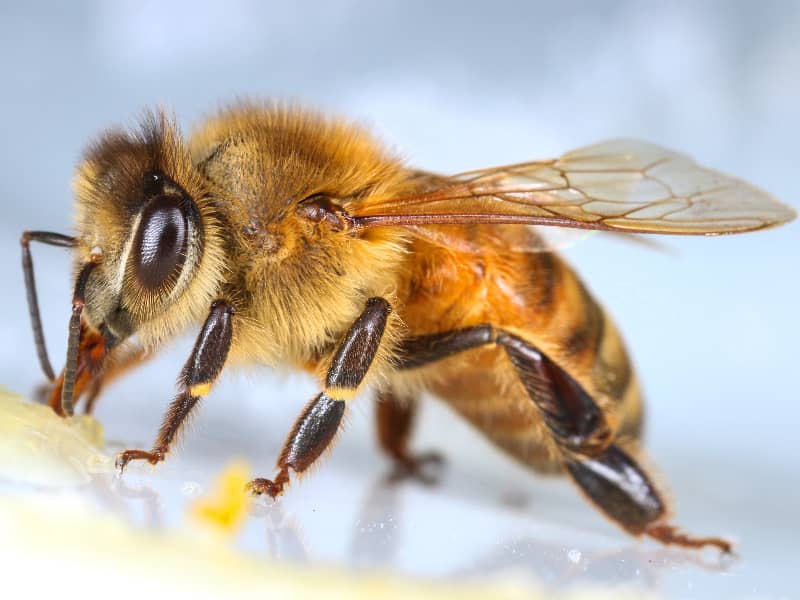
What makes bees aggressive? - The influence of humans
Humans play a significant role in bee aggressiveness. Our activities, whether conscious or unconscious, can create stress and threats to the bee population. Therefore, it is important to understand and minimize the impact of humans on these sensitive creatures.
Pollution
Pollution of the environment by chemicals, plastics and other pollutants can severely affect the behavior of bees. Toxic substances released into the air and water can harm and stress bees, which in turn can lead to aggressive behavior. This is especially relevant in areas that are heavily industrialized or where automobile traffic is high.
Agricultural practices
The use of pesticides and herbicides in agriculture has a direct impact on the health of bees. Insecticides such as neonicotinoids are known to harm bees, which can subsequently lead to increased aggression. Furthermore, agricultural practices that destroy natural vegetation can deprive bees of important food sources, increasing stress.
Urbanization
The increasing development and urbanization of habitats poses a challenge for many animal species - and bees are no exception. The lack of suitable nesting sites and food sources in urban areas can lead to increased stress and aggression in bees. It is therefore important to consider the needs of bees in urban development projects.
Humans have a significant impact on the aggressiveness of bees, and this knowledge should inspire us to be more responsible stewards of our environment. Only through better understanding and sustainable practices can we ensure peaceful coexistence with these important pollinators.
What makes bees aggressive? - Seasons
Seasons have a significant impact on bee behavior, including aggressiveness. Different weather conditions, food availability and breeding cycles can cause bees to react differently at certain times of the year. It is important to understand these seasonal influences to avoid potential conflicts with these beneficial insects.
Spring
In spring, bees start activating their hives after winter dormancy. At this time they are usually very busy collecting nectar and pollen and tending to their brood. Although they tend to be peaceful and focused during this time of year, they can become aggressive if they feel their hive is threatened as they raise a new generation of bees.
Summer
Summer is the peak season for bee activity. Food sources are abundant, but this also means that competition increases among different bee species and even within the same hive. This increased competition and activity can make bees more nervous and therefore more likely to attack, especially when food sources become scarce.
Fall
In autumn, the bees prepare for the coming winter. This is a critical time for the hive, as sufficient stores need to be built up for overwintering. Bees can be particularly sensitive and aggressive during this phase, as any disruption to their preparations could be potentially catastrophic. Protection of the hive becomes the top priority, which can lead to increased vigilance and aggressiveness.
What makes bees aggressive? - Gender and aggressiveness
In the hive, there are different genders and roles, each with unique behaviors and levels of aggression. Whether worker, drone or queen, each individual contributes to the dynamics of the hive in its own way. It is interesting to understand the differences in behavior between these sexes, especially in terms of aggression.
Workers
Workers are the female bees that do most of the work in the hive, from collecting nectar and pollen to caring for the brood. They are also the ones most likely to become aggressive, especially when defending the hive. Their stings can be painful, and they are usually the first to recognize and respond to a threat to the hive.
Drones
Drones are the male bees in the hive, and their main task is to mate with the queen. They do not have a stinger and are therefore not aggressive. Drones often leave the hive to seek queens from other hives and do not take defensive roles. Their presence or absence in the hive has little effect on the overall aggression level of the colony.
Queen
The queen has a central role in the hive, as she is responsible for laying eggs and thus for the reproduction of the colony. Although she has a stinger, she usually uses it only to kill rival queens. She is not aggressive toward humans or other animals. The queen emits pheromones that can control worker behavior, and a change in queen or stressors affecting her can alter the level of aggression in the hive.
What makes bees aggressive - defense mechanisms
Bees have developed several defense mechanisms to protect their colony from potential threats. These mechanisms are not only crucial for the bees' survival, but may also explain why they appear aggressive in certain situations. The three main defense strategies are stinging, defense by smell, and swarm formation.
Stitching
Stinging is probably the bees' best-known means of defense. Worker bees are equipped with a stinger that they use when they perceive a threat to the hive. Interestingly, stinging is often fatal to the bee because the stinger gets stuck in the skin of mammals and the rear end of the bee is torn off in an attempt to free itself. This shows how seriously bees take the defense of their colony.
Defense by smell
Among other things, bees communicate through pheromones. These chemical signals can also serve as a defense mechanism. Individual bees can emit alarm signals in the form of pheromones, which alert other bees in the hive and make them more aggressive. This is especially useful when the hive faces a serious threat, as it strengthens the collective defense.
Swarming
Swarming is another defense mechanism used by bees. A swarm is usually less aggressive than a single hive because it has no brood or stores to defend. Nevertheless, the sheer number of bees in a swarm can be a deterrent. In some cases, the swarm as a whole may react aggressively when it feels threatened, such as when searching for a new nesting site.
Each of these defense mechanisms has its own advantages and disadvantages, and bees use them differently depending on the situation. Knowing these mechanisms can help us better understand the bees' reactions and avoid unnecessary conflicts.
Conclusion: What makes bees aggressive?
After a close look at the various factors that contribute to bee aggressiveness, it can be seen that there are a variety of influences that control the behavior of these fascinating insects. From genetic factors to environmental conditions and human activities, the subject offers a complex picture that makes us think both as individuals and as a society.
Key findings
- Genetic factors play a crucial role in determining the level of aggression of different bee species.
- Environmental conditions such as seasons and food availability can influence aggression levels.
- Diseases and parasites can be stress factors for bees and increase their aggressiveness.
- Human activities such as pollution and agriculture can also affect bee behavior.
- Each gender and role in the hive has specific behavior patterns that contribute to the overall dynamics of aggression.
Practical recommendations
- Keep your distance from beehives and avoid loud noises or quick movements to avoid provoking bees.
- Gardening or farming should consider bee-friendly practices so as not to interfere with the natural behavior of bees.
- A better understanding of the behavior patterns of bees in different seasons can help us avoid conflicts.
- If you have a hive nearby, be aware of the risks and take appropriate precautions.
By better understanding the various factors that contribute to bee aggressiveness, we can hopefully both appreciate their importance to our ecosystem and find ways to peacefully coexist with them.
Author

-
Garden animal - A life with nature
Welcome to my animal blog! My name is Dirk and I am happy to take you on my journey through the fascinating world of animals and gardening.
Born 54 years ago, I have had an insatiable curiosity for the animal world around me since childhood. Although I have moved professionally in other industries, my true passion has always been animals and nature. It is remarkable how a small garden has become such an important part of my life.
Many of my fondest memories are associated with the animals that share our home. Whether it's the curious squirrels that scurry across the trees in the morning, the colorful variety of birds that visit our feeders, or the busy bees and butterflies that pollinate our flowers, every moment with them is invaluable to me.
This blog is my contribution to share my experiences, discoveries and insights with like-minded people. Here I will share stories of unforgettable encounters with animals, give tips on gardening and creating wildlife-friendly habitats, and take you on my journeys through nature.
Thank you so much for being here!
Cordial,
Dirk aka garden animal
Last posts
- 27. February 2024PetsVeganes Hundefutter – Grün und Gesund?
- 18. January 2024ChickensOregano für Hühner
- November 27, 2023HamsterDiurnal hamsters
- November 24, 2023HamsterHamster hammock

